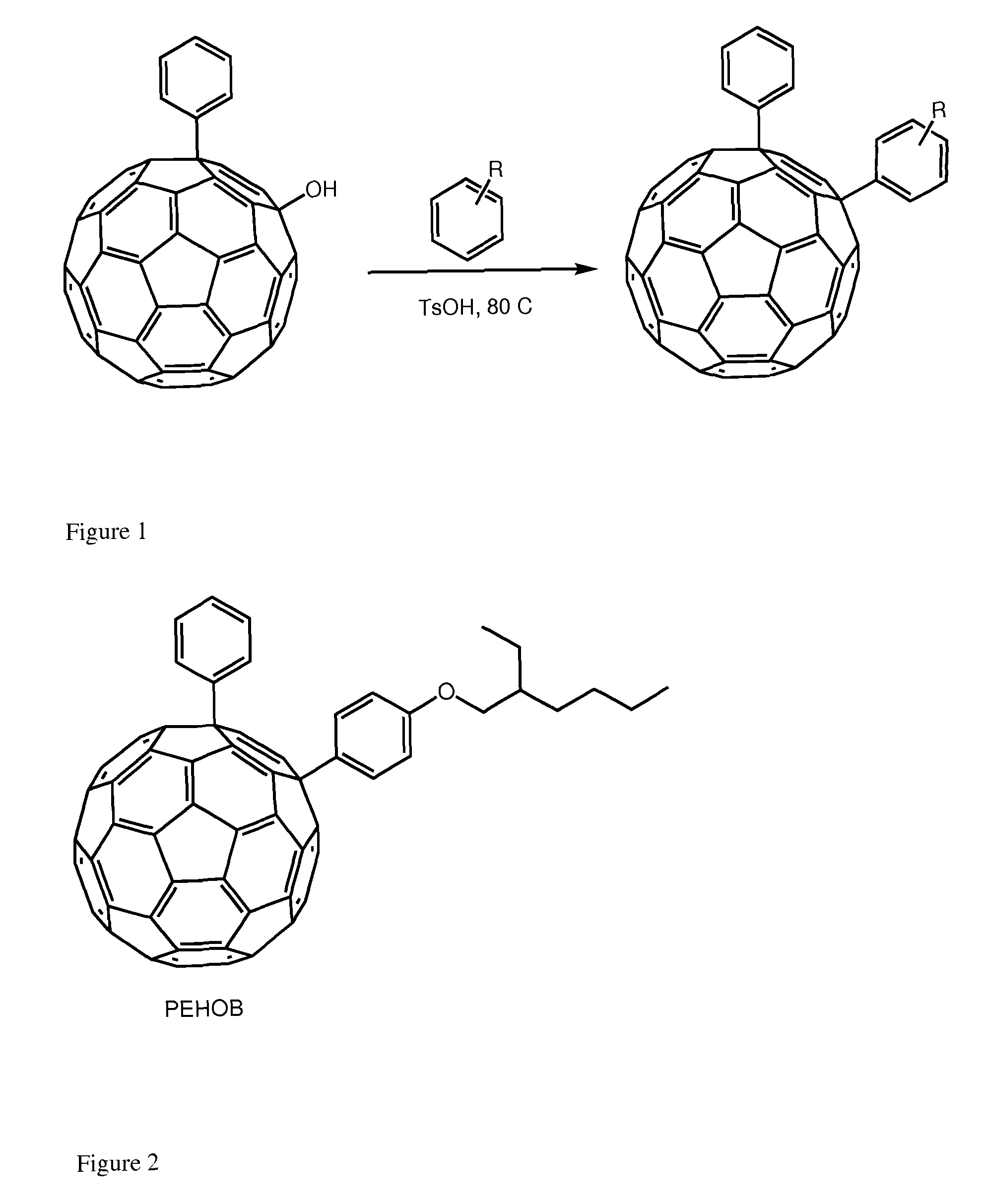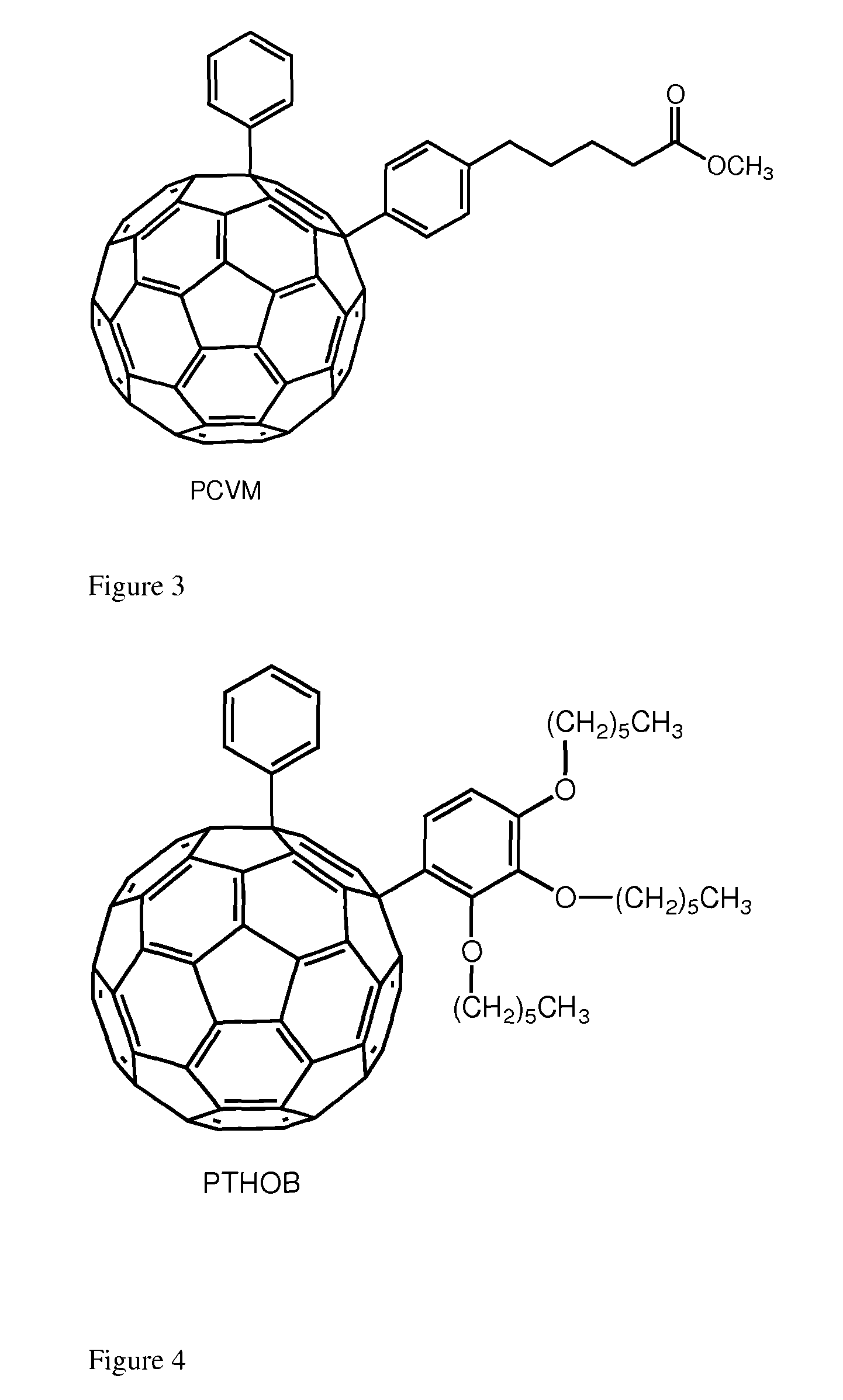1,4-fullerene addends in photovoltaic cells
a technology of photovoltaic cells and addenda, which is applied in the field of fulllerene polymer compositions for photovoltaic cells, can solve the problems of reducing efficiency, affecting the efficiency of devices, and affecting the performance of devices, so as to achieve less symmetry and absorb more ligh
- Summary
- Abstract
- Description
- Claims
- Application Information
AI Technical Summary
Benefits of technology
Problems solved by technology
Method used
Image
Examples
Embodiment Construction
[0025]We herein introduce a new class of fullerene derivatives based on the 1,4 addition chemistry.6
[0026]The interest for the synthesis of 1,4 addends include: (i) lower symmetry with consequent increased optical absorption in the visible (onset at ca. 500 nm and extinction coefficient of ca. 8000 mol−1 cm−1); (ii) new chemistry which allows for straightforward functionalization and (iii) possibility to tune solubility and energy of the LUMO. The enhanced absorption can favorably affect the short circuit current (Jsc) by increasing the number of photo-charges generated in the electron-transporting layer of the device. Tuning the energy of the LUMO is desirable to couple the fullerene with a specific donor polymer. Data obtained from devices incorporating these addends is encouraging. To the best of our knowledge, only one 1,4-fullerene addend was used in solution processed solar cells and it was based on a benzoporphyrin and not a polymer.7 These derivatives can be tuned for their...
PUM
| Property | Measurement | Unit |
|---|---|---|
| v/v | aaaaa | aaaaa |
| lowest unoccupied molecular orbital | aaaaa | aaaaa |
| LUMO) energy | aaaaa | aaaaa |
Abstract
Description
Claims
Application Information
 Login to View More
Login to View More - R&D
- Intellectual Property
- Life Sciences
- Materials
- Tech Scout
- Unparalleled Data Quality
- Higher Quality Content
- 60% Fewer Hallucinations
Browse by: Latest US Patents, China's latest patents, Technical Efficacy Thesaurus, Application Domain, Technology Topic, Popular Technical Reports.
© 2025 PatSnap. All rights reserved.Legal|Privacy policy|Modern Slavery Act Transparency Statement|Sitemap|About US| Contact US: help@patsnap.com



